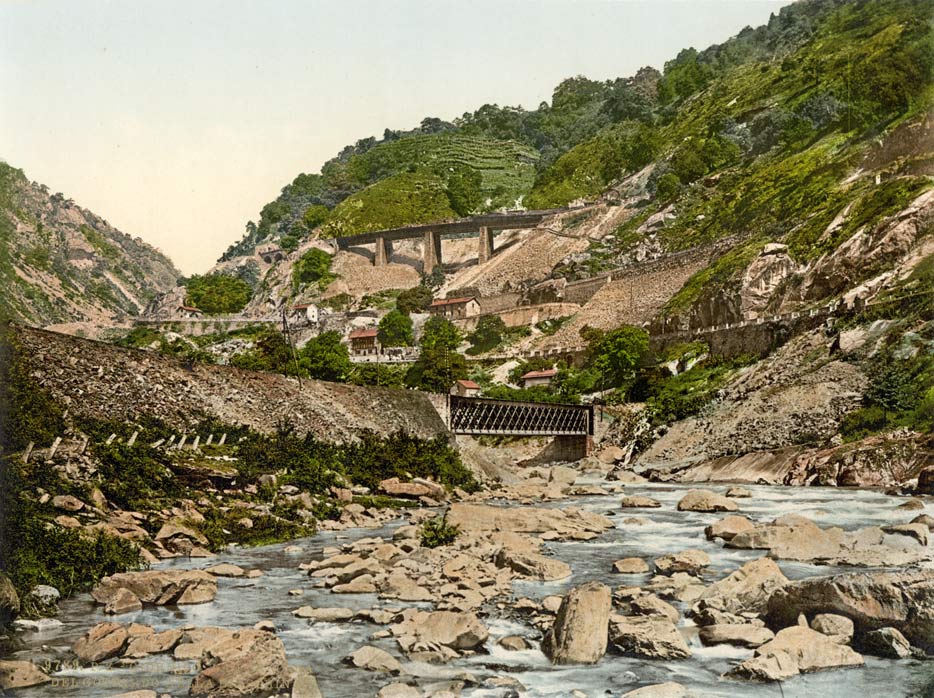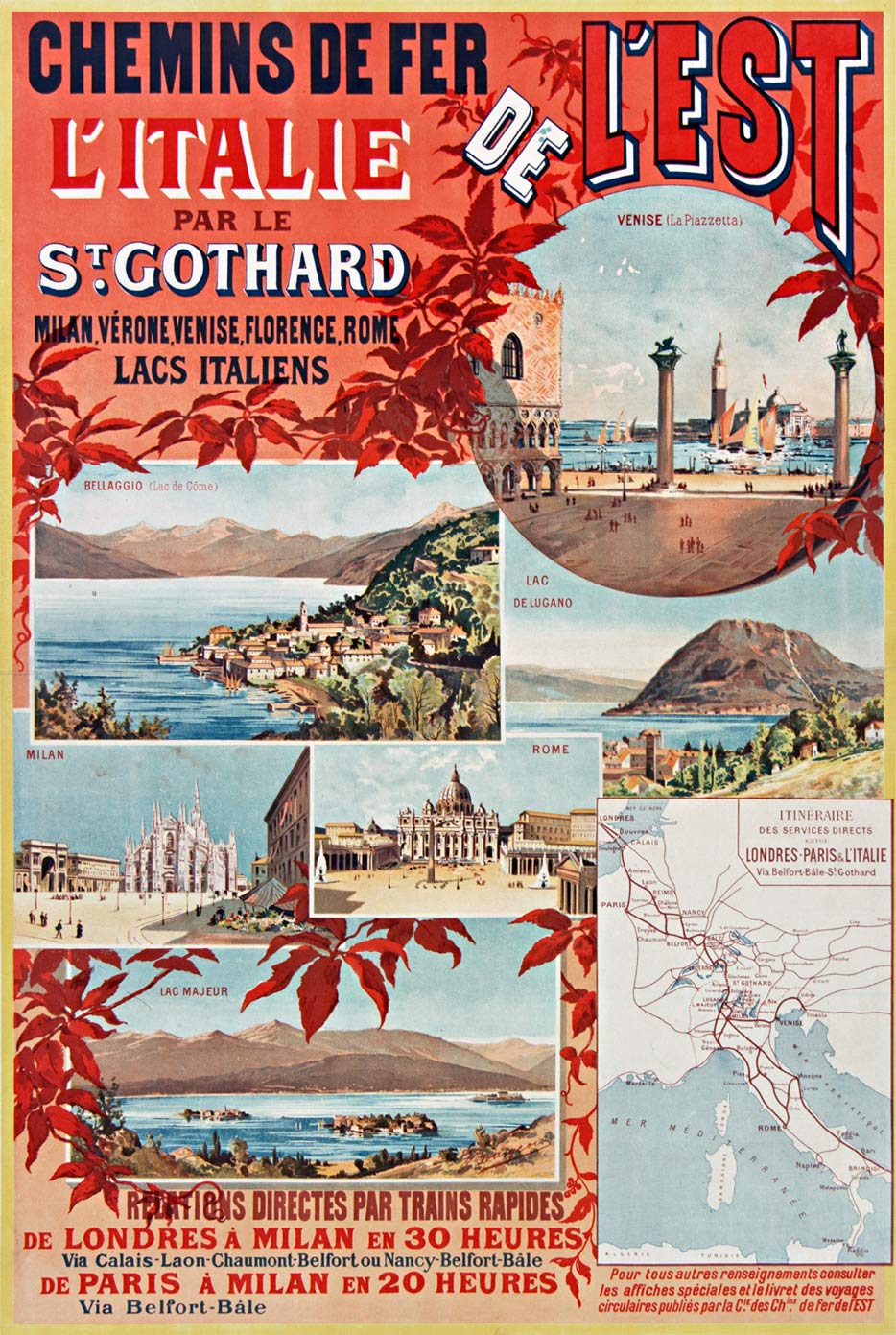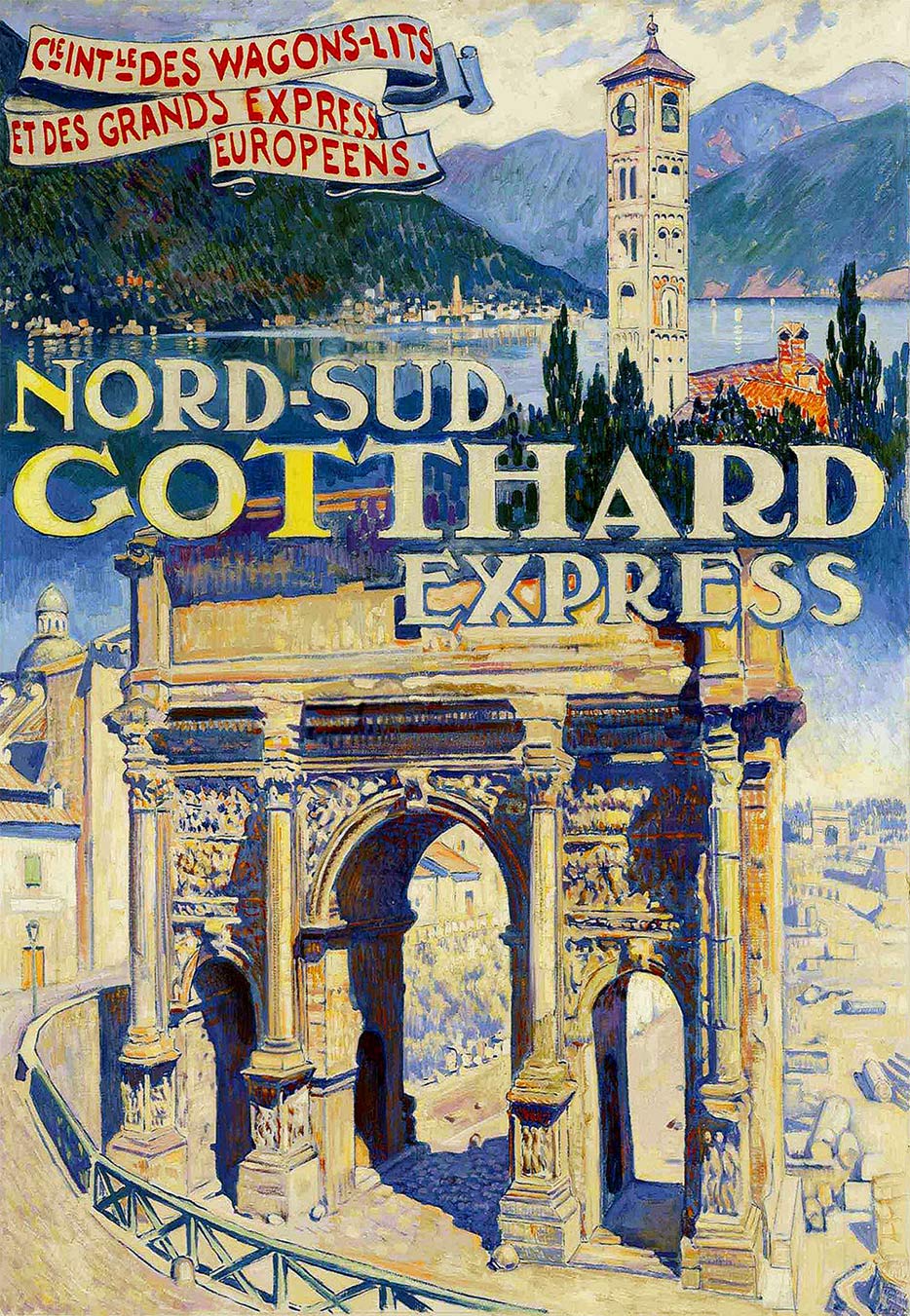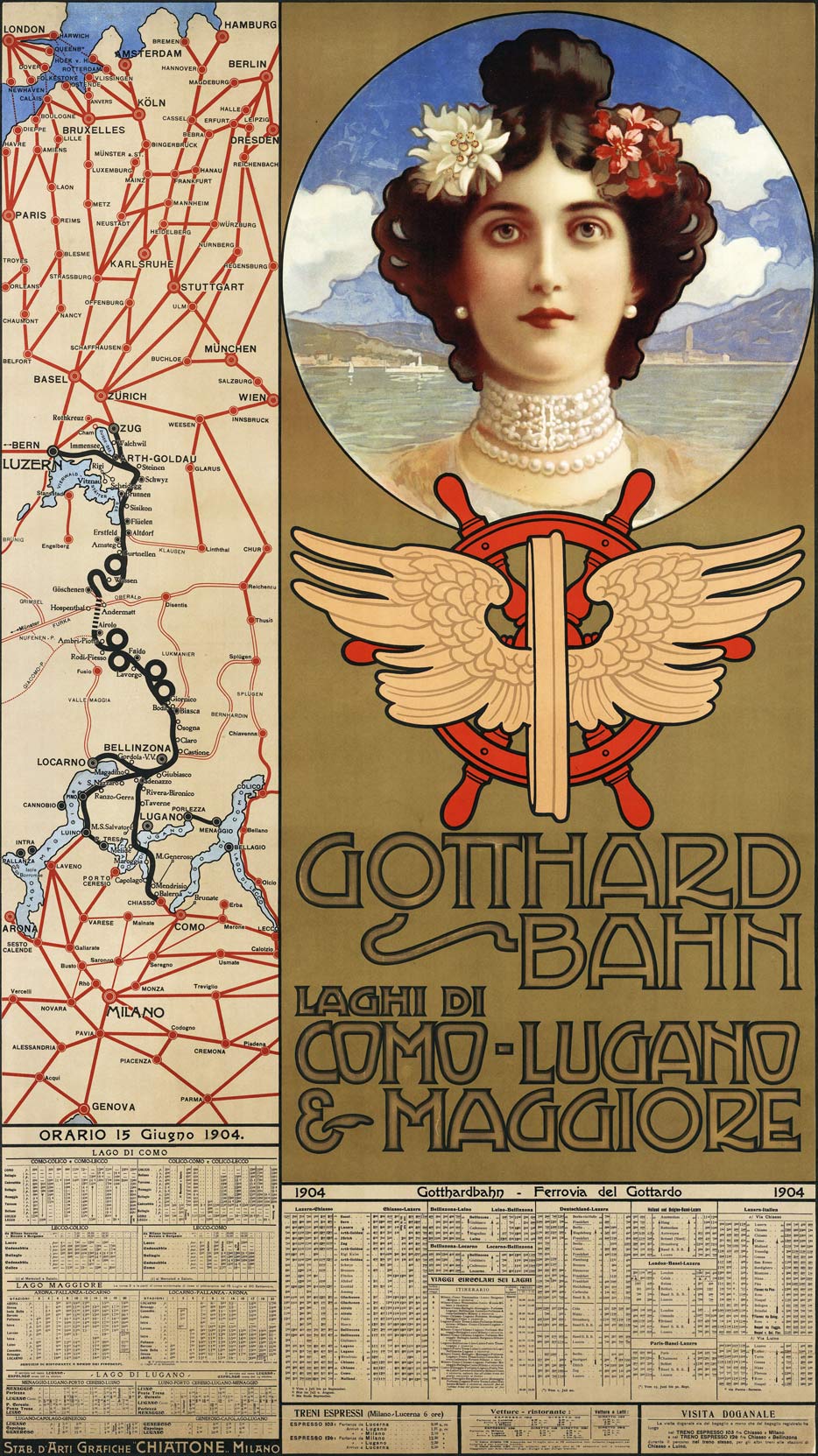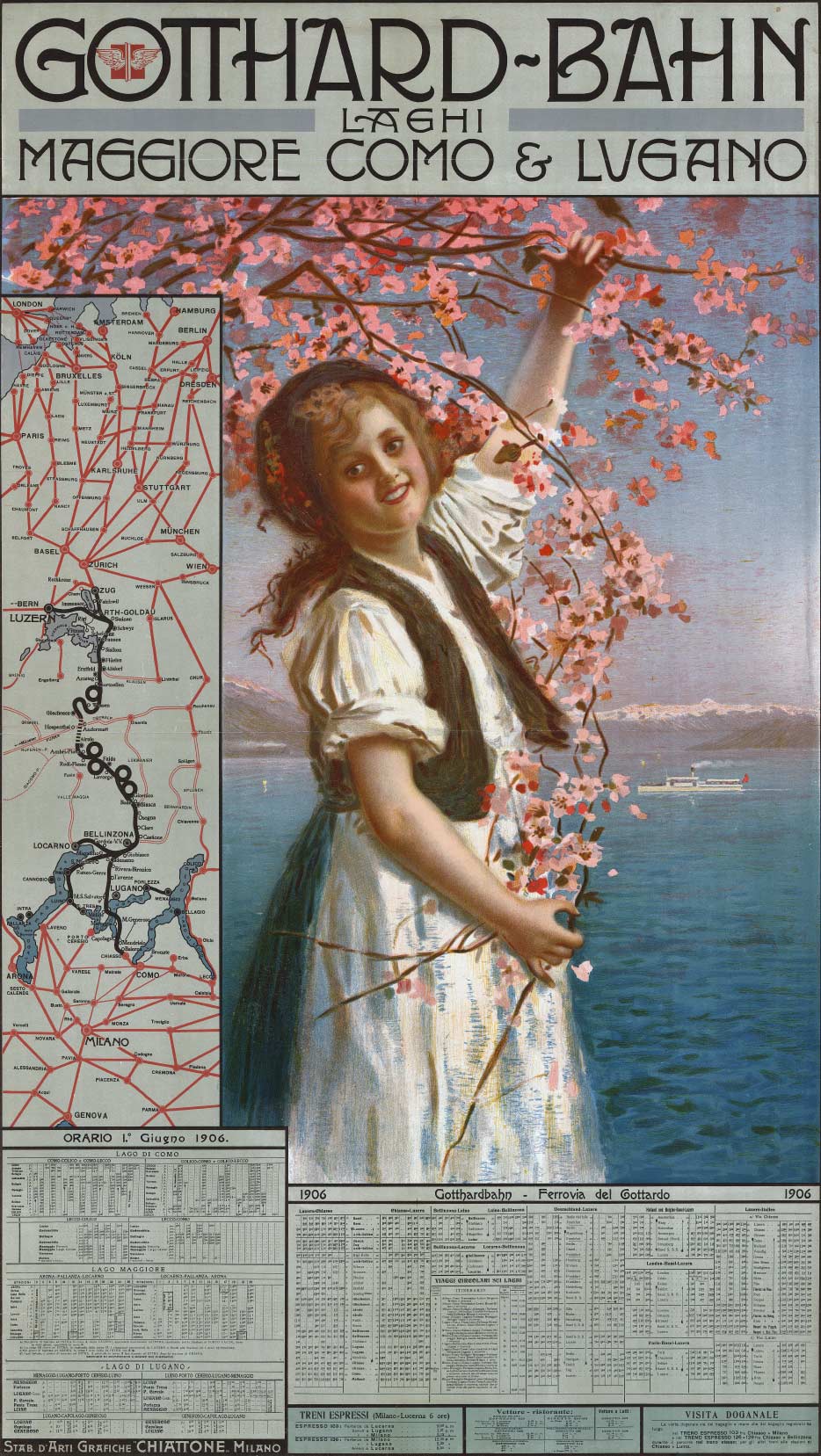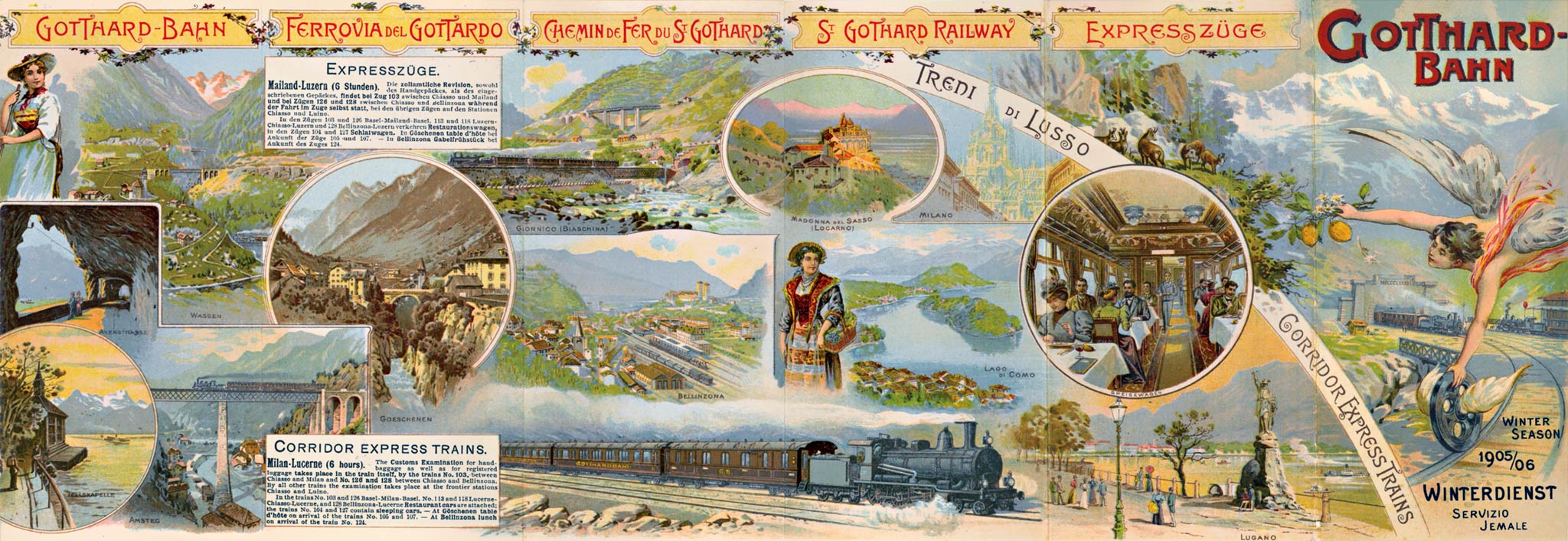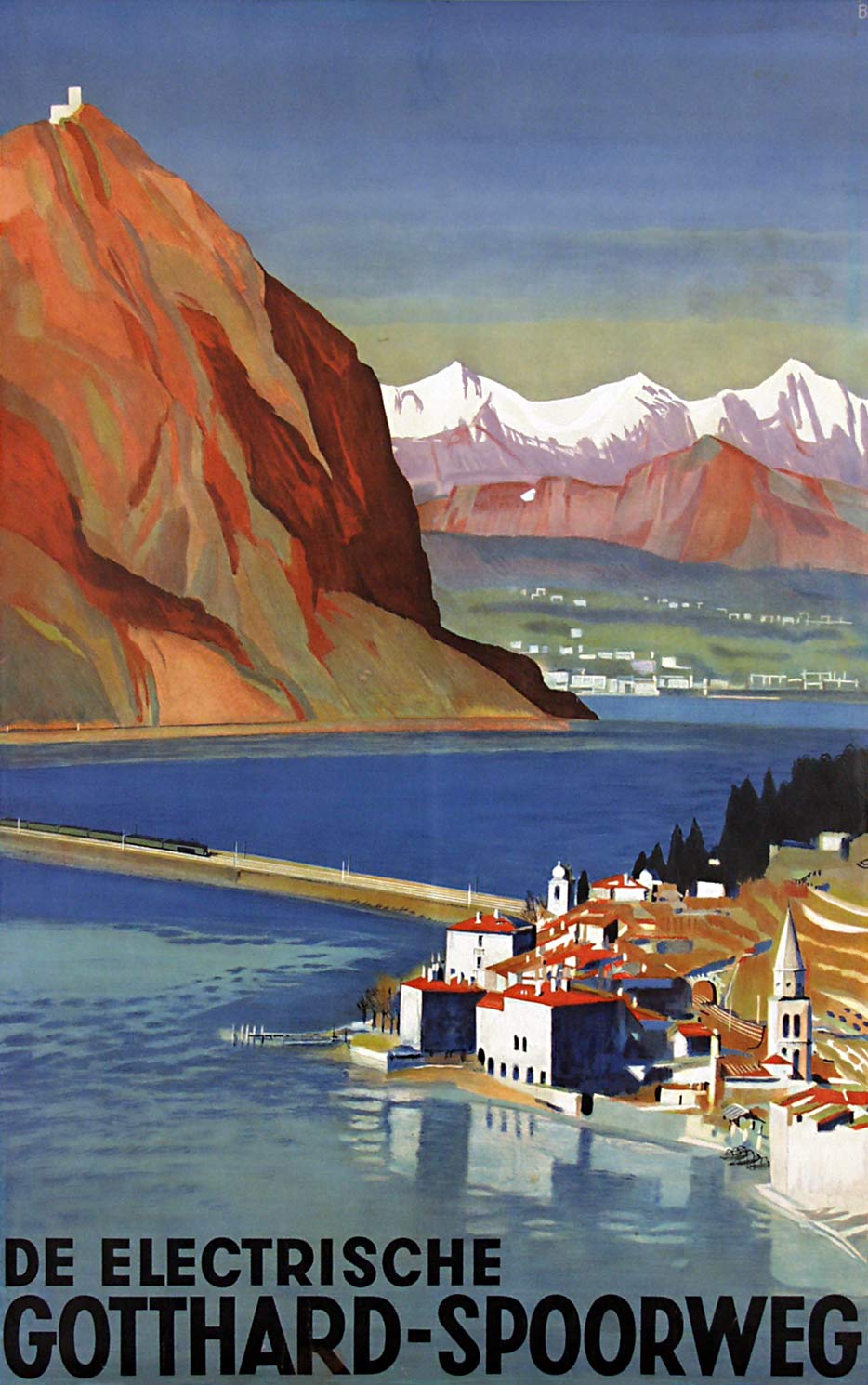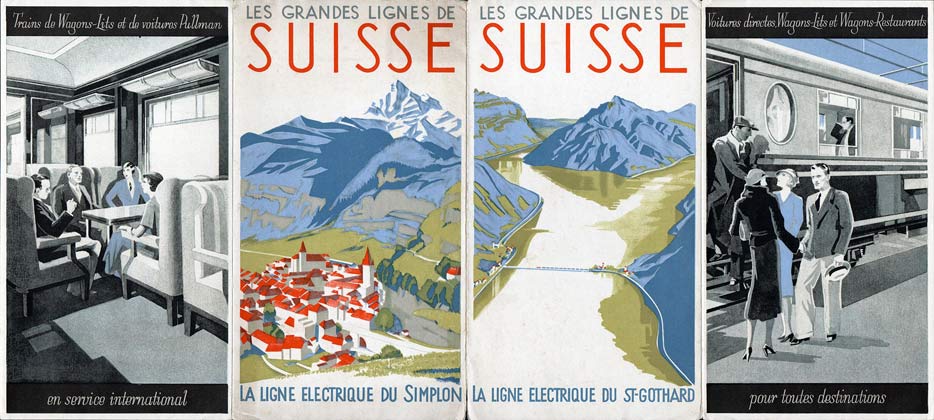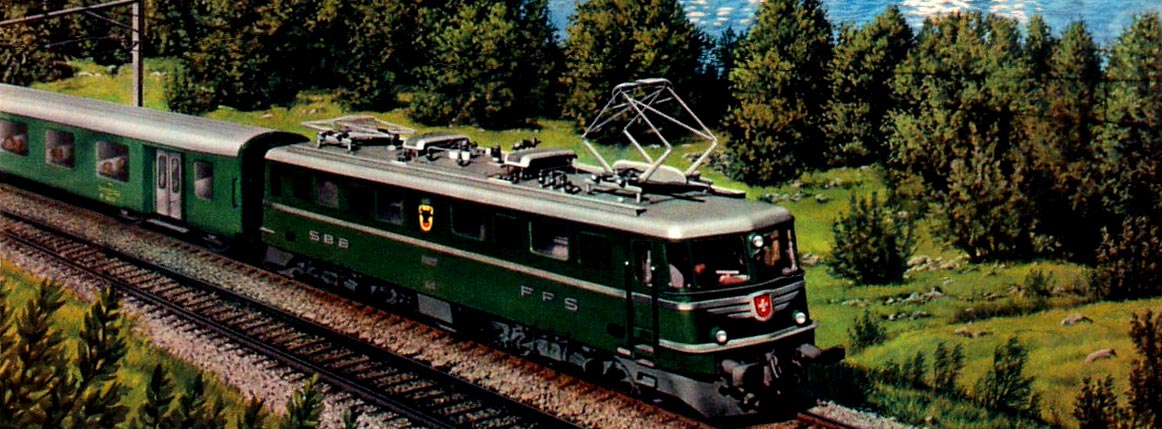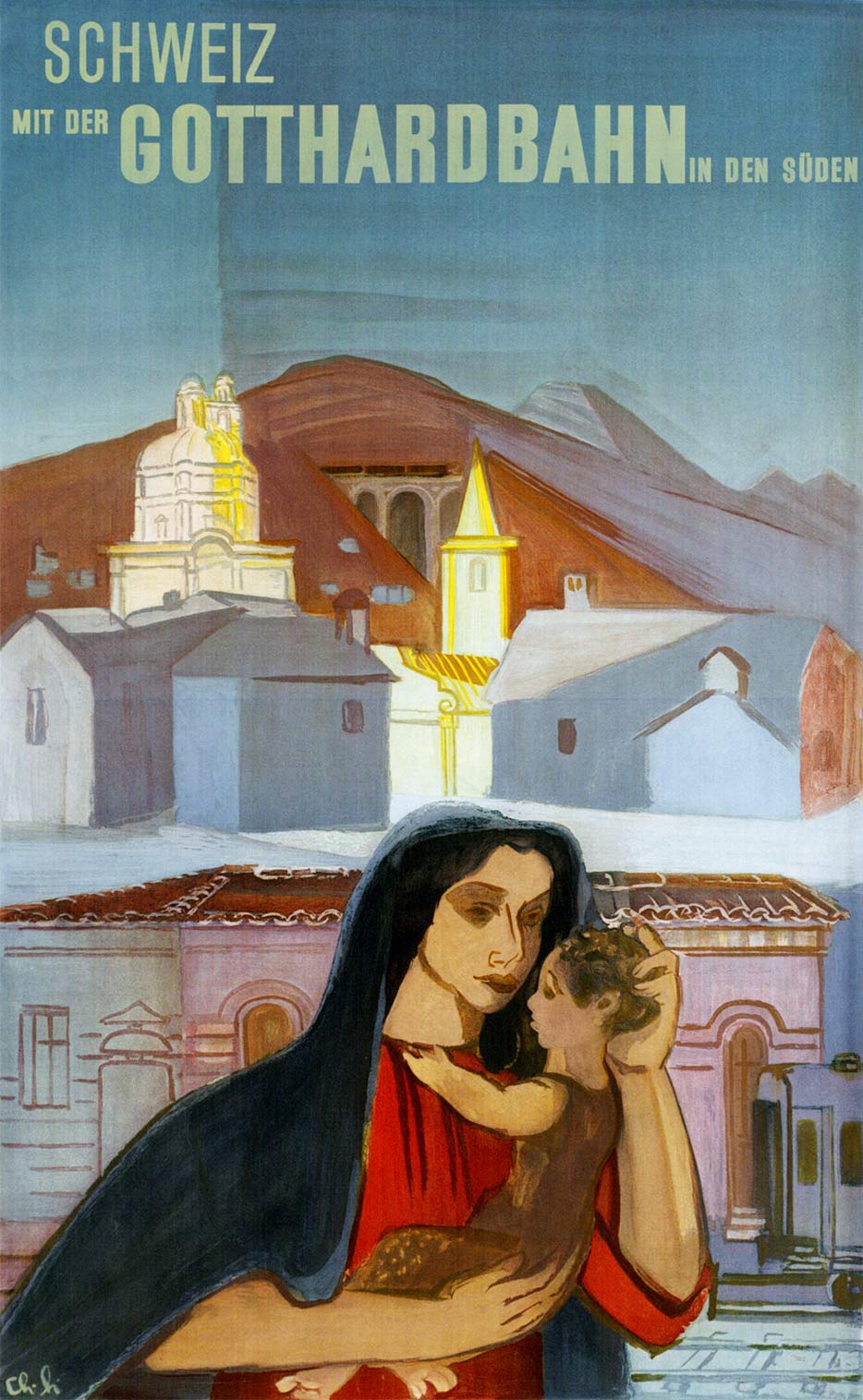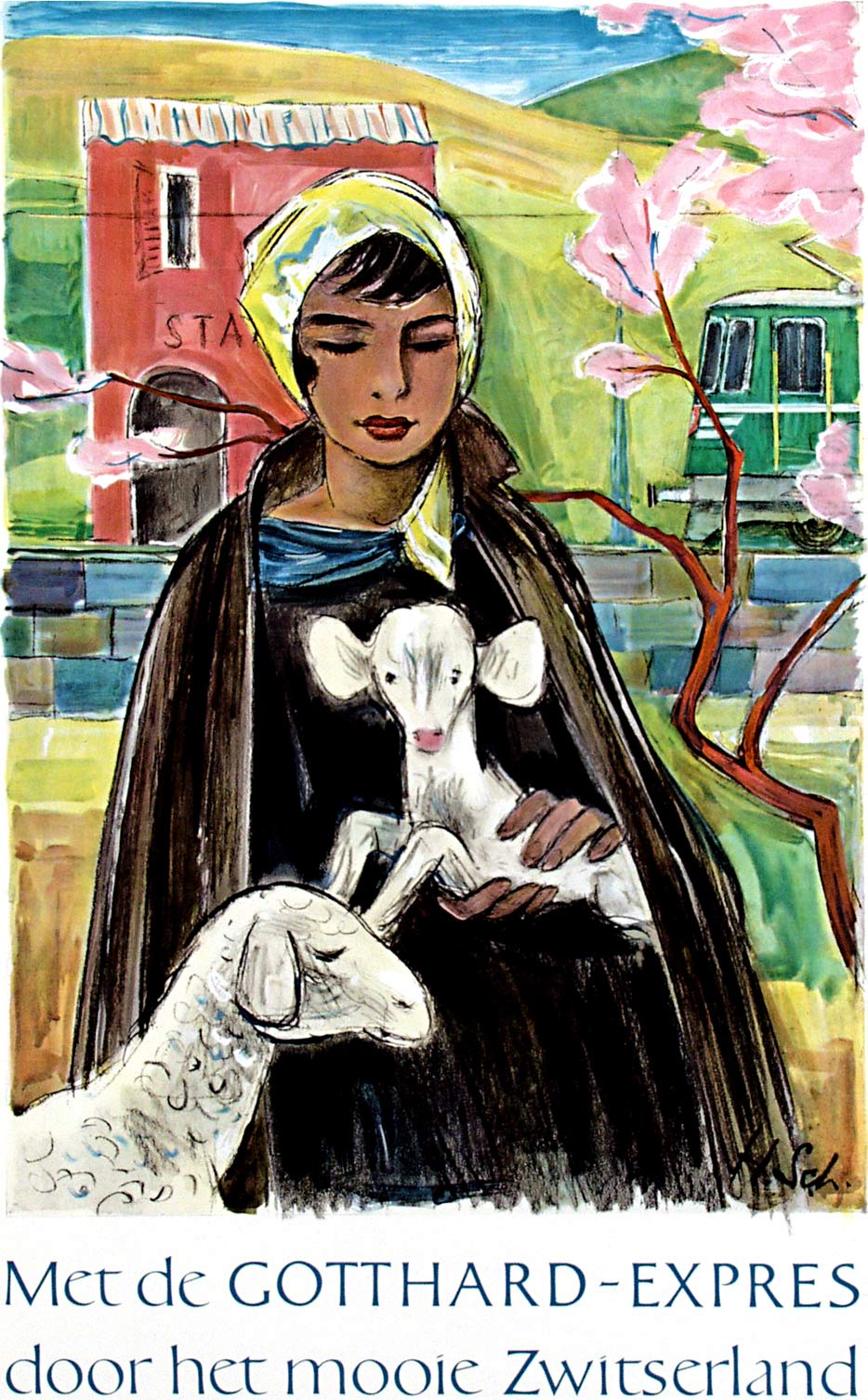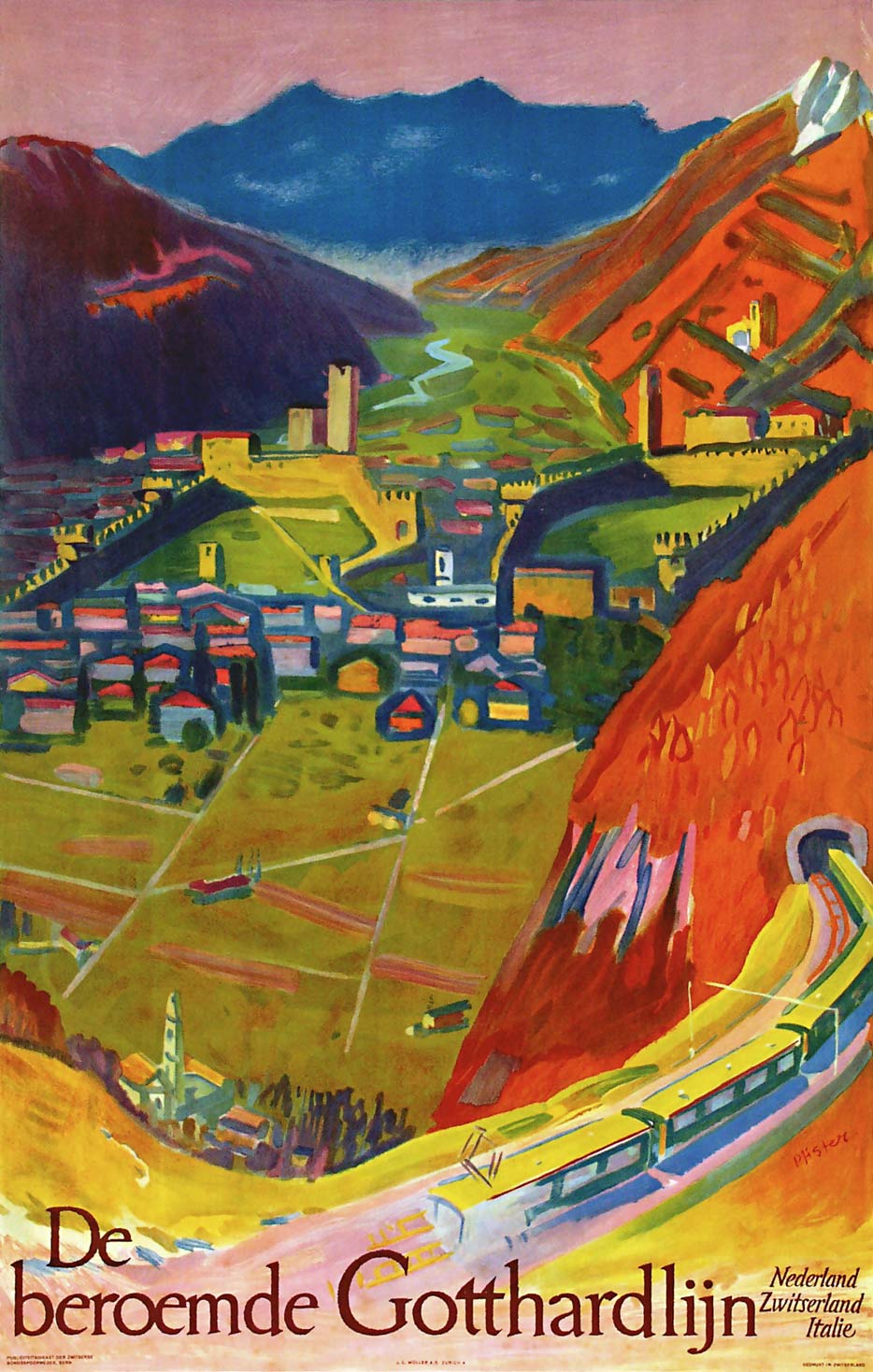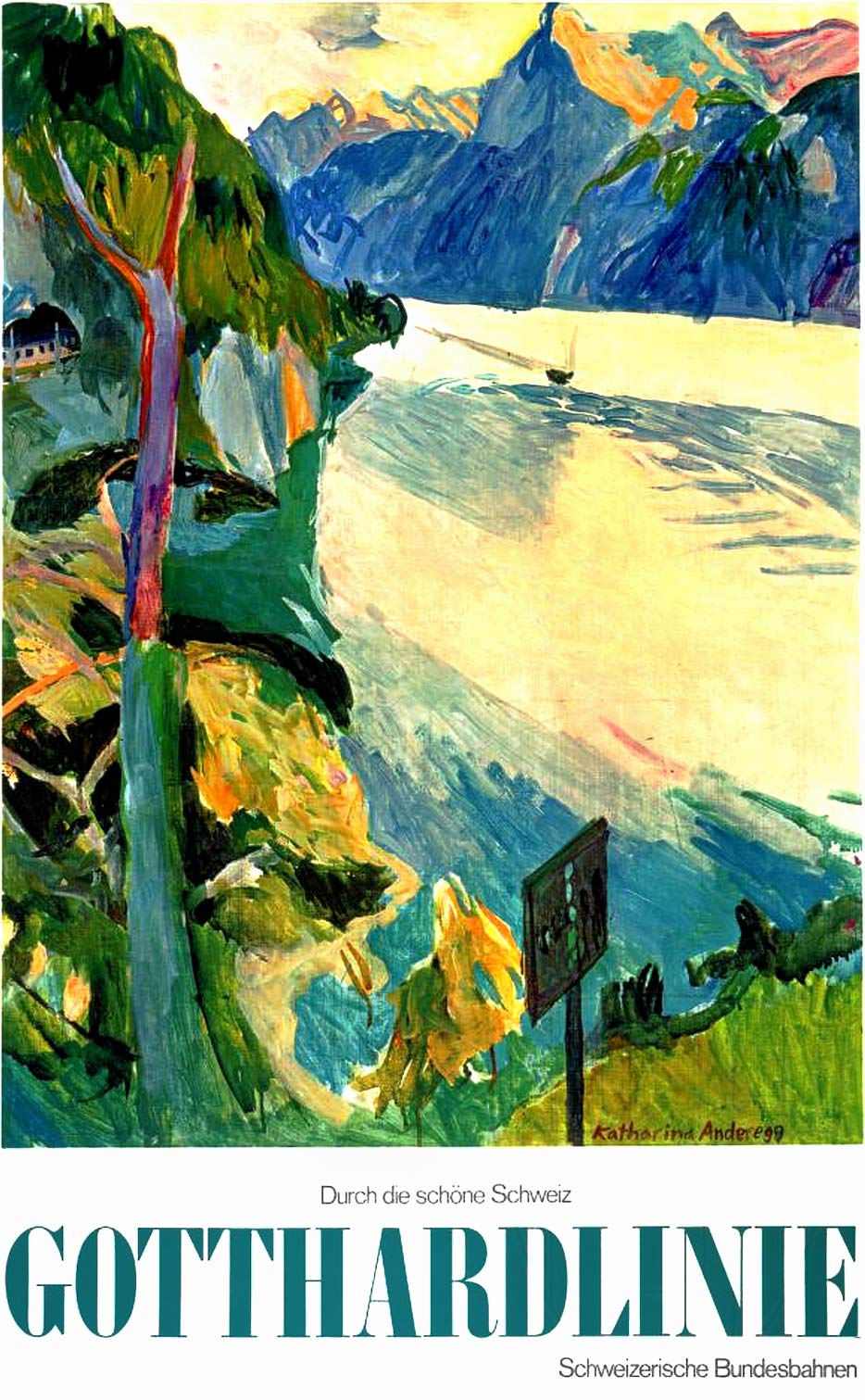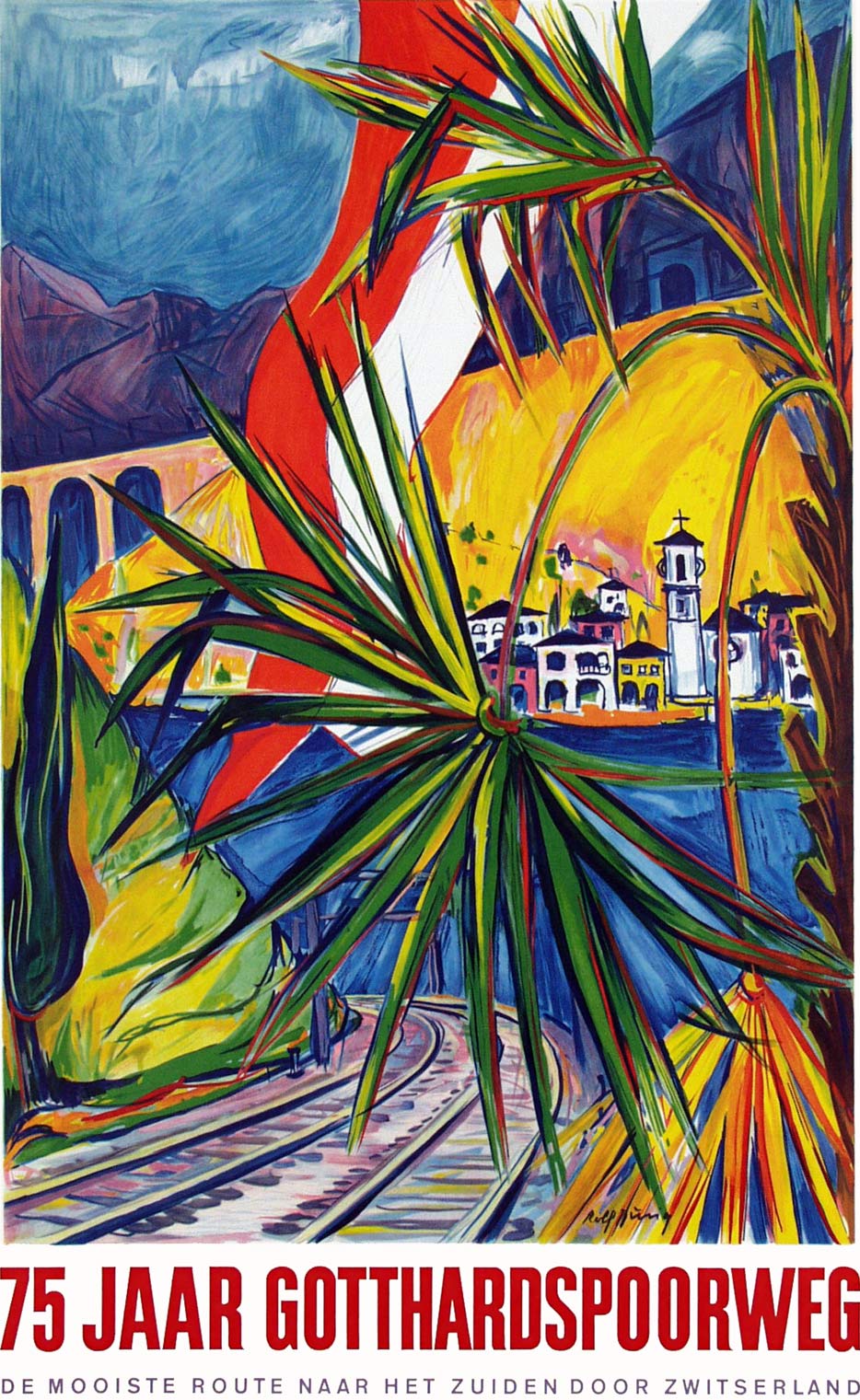Switzerland through and through
Advertising the Gotthard Railway 1882-2016
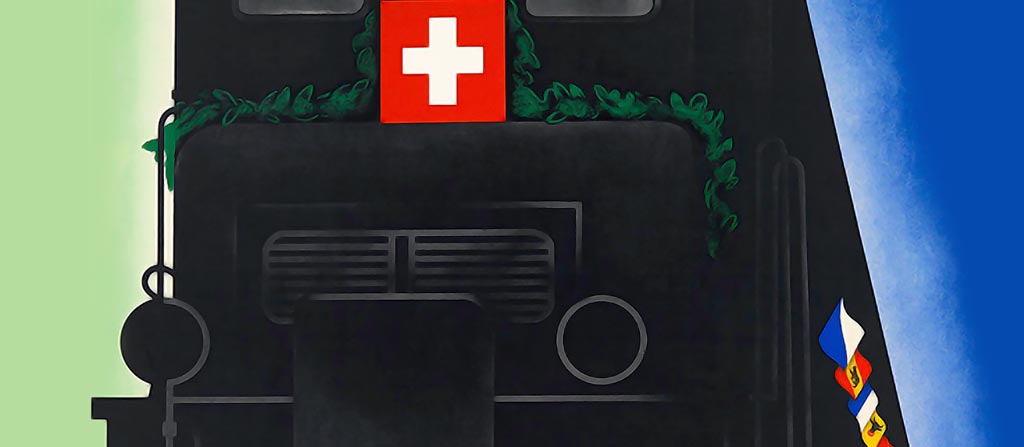 Nederlandse versie
Nederlandse versie
The first posters for the Gotthard Railway appeared a few years after its inauguration in 1882, the last ones in 2016 surrounding the opening of the 56 km long Gotthard Base Tunnel. In the intervening years not only the design styles changed, but also the posters' focus. An international project by origin, the Gotthard was later touted as being typically Swiss.
Alternately the railway was advertised as a transit route from northern Europe to Italy, or a Swiss travel destination and attraction in itself. In both cases the Gotthardbahn was the link between the cold north and the sunny south: either Italy or the southern Swiss canton of Ticino.
Early years
In 1882 the inauguration of the Gotthard Bahn brought many international dignitaries to Lucerne. The construction had been substantially cofinanced by Germany and Italy, which considered the north-south axis through the Alps of great economic importance. The heavy construction labour was carried out by Italian workers. Still, the Swiss soon started to see the Gotthardbahn as a national icon.
The 200 km long line runs from Immensee (near Lucerne) to Chiasso on the Italian border. It crosses the German-speaking cantons of Zurich, Schwyz and Uri and the Italian-speaking Ticino. Most famous parts are the spiral tunnels at Wassen and the Gotthard tunnel between Göschenen and Airolo, with 15 kilometers the longest in the world at the time. The tunnel runs below the early 19th-century Gotthard Pass after which the railway was named.
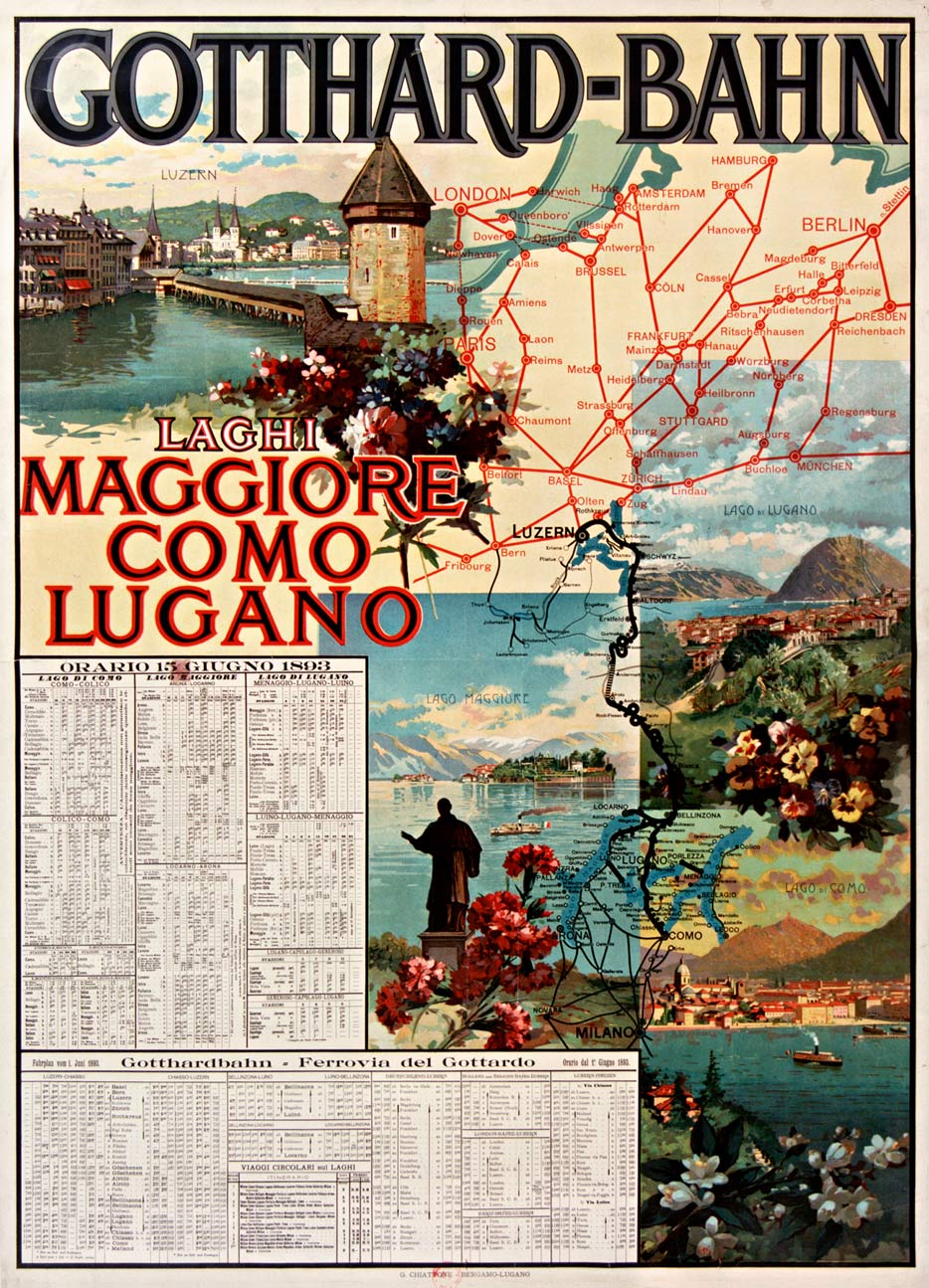

Early posters
The first posters for the Gotthardbahn were published in the early 1890s. They were filled with maps, detailed timetables and images of Swiss and Italian lakes. The designer was Gabriele Chiattone (1853-1934) from Lugano, who worked at the Istituto Italiano di Arti Grafiche in Bergamo.
Souvenirs
Around 1890 the Gotthard Railway Company started to actively target foreign tourists. The emphasis was not on Italian destinations but on the Gotthard itself as a technical miracle and a scenic region. The railway company commissioned the US consul George Catlin to write an English itinerary with a short history, first published in 1891. Over 10,000 copies were distributed in Britain, the United States and Canada.
The richly illustrated brochures were produced by the Orell Füssli graphics company of Zurich, which also added route maps, including a detailed one of the Wassen spiral tunnels. Its subsidiary Photoglob issued souvenir albums with photos of the Gotthard scenery, aimed at tourists who did not own a camera yet.
Then came the Gotthard railway: piercing mountains, spanning chasms, bridging torrents, and scaling heights, and forming, in its entirety, the grandest engineering triumph of modern times. In this slow, but steady development from the dizzy, unfrequented footpath to the solidly constructed, granite-embedded railway, we can read the whole story of the growth and progress of science and civilisation.
We are at Göschenen, the northern point of entrance to the great tunnel through the St. Gothard, the longest in the world. Here the railway, and its old-fashioned companion, the stage-coach, part company for a while, the former passing into the darkness of the tunnel, to emerge later at Airolo, on the Southern, or Italian side of the mountains, while the latter follows its time-honoured, winding, and picturesque way...
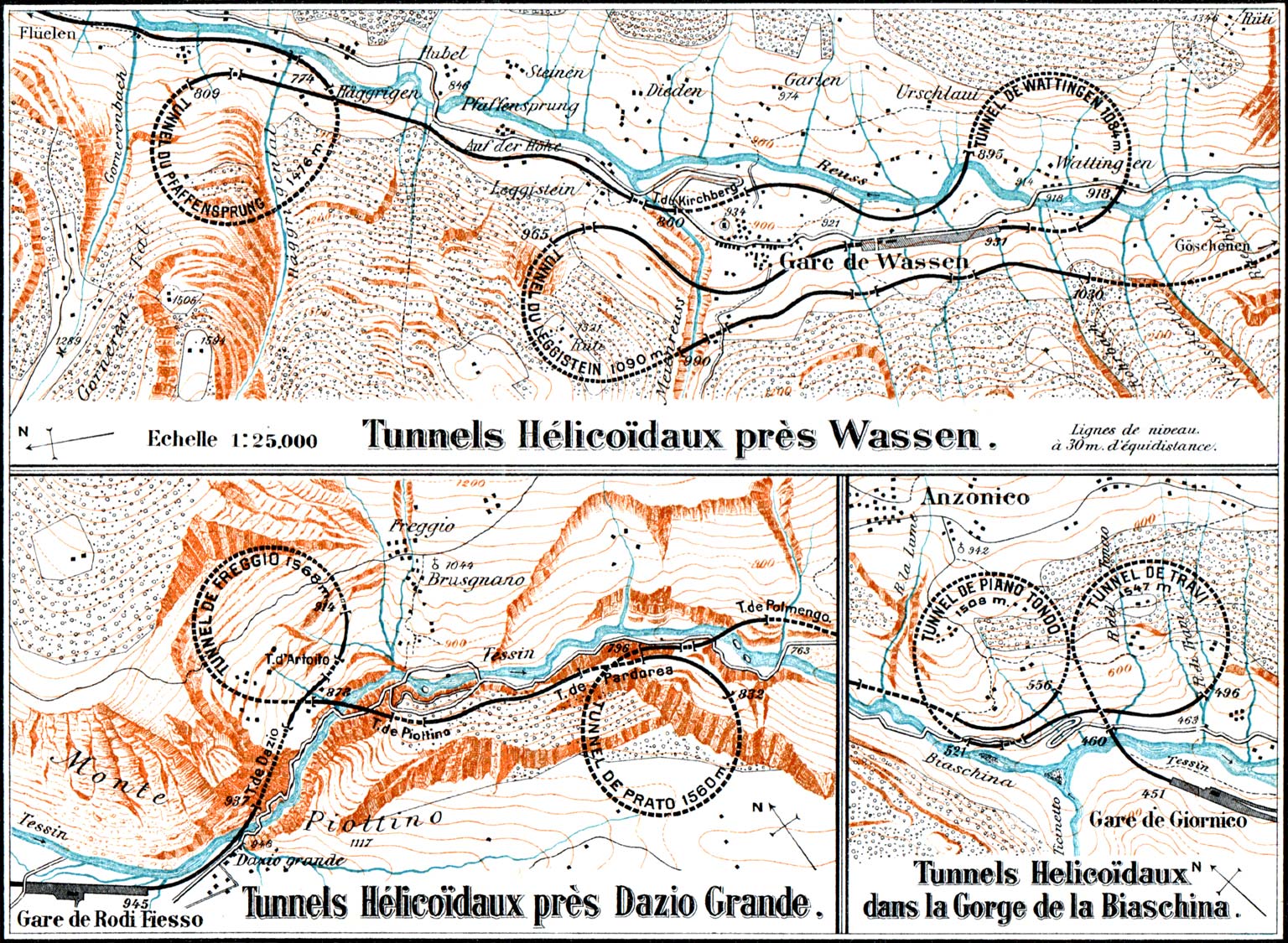
Voyages en Italie
Since the opening of the Mont Cenis tunnel the French PLM railway company offered journeys to Italy through southern France. Thanks to the Gotthard line its rival company Est could also offer journeys to Italy via Northern France and Switzerland by 1890. This gave Parisian passengers two options, while the new route was the shortest for travelers from Britain.
Est was very actively promoting the Gotthard connection. The advertising featured Italian destinations such as Milan, Venice and Rome rather than the scenic Swiss section. A 1892 poster includes a map of the London-Paris-Italy route with the Gotthard at the center. The Paris-Milan train journey took only 20 hours.
After the opening of the Simplon Tunnel in 1906, which linked the southwest of Switzerland to Italy, the Gotthard connection lost its importance to France.
Nord-Sud Gotthard Express
In 1897 the Wagons-Lits company was planning a luxury sleeping car service on the Gotthard. This Nord-Sud Gotthard Express had to connect Germany to Italy. The Belgian painter Théo van Rysselberghe created a poster depicting Lake Lugano, but also the Roman Forum in Rome. But the Nord-Sud Gotthard Express never became reality. It wasn’t until 1911 that Wagons-Lits started a service named Gotthard Express on the Berlin-Milan-Genoa route. It was already discontinued after six months.
Art Nouveau
In the first years of the 20th century a series of Gotthard Railway posters with timetables was issued in Art Nouveau style. Designer Gabriele Chiattone, who also created the Gotthard posters of the previous decade, had moved to Milan in 1899 where he met young artists and new design fashions.
A woman was the main subject of each of the posters; perhaps it was Helvetia, the personification of Switzerland. Sometimes a lake served as a backdrop. A railway map showed the international connections in red and the Gotthard line in black, with its characteristic spiral tunnels as unexpected decorative elements, resembling floral Art Nouveau ornaments. On the oldest poster the lady is holding the network in her hands while standing on the winged wheel of the railways.
Nationalization
In 1909 the private Gotthard Railway Company was taken over by the SBB, the Swiss Federal Railways. Ten years earlier the Swiss had decided for the formation of this state railway company in a referendum. The Gotthard Railway was the last mainline to be nationalized.
Soon after its takeover the SBB started considering electrification of the Gotthard Railway. Even the strongest steam locomotives had trouble ascending the steep slopes, resulting in slow speeds. Long trains had to be hauled by two engines. Switzerland also wanted to become independent of foreign coal and use its own hydropower instead. In 1913 the decision for electrification was made, but the First World War caused delays.
The electric Gotthard line

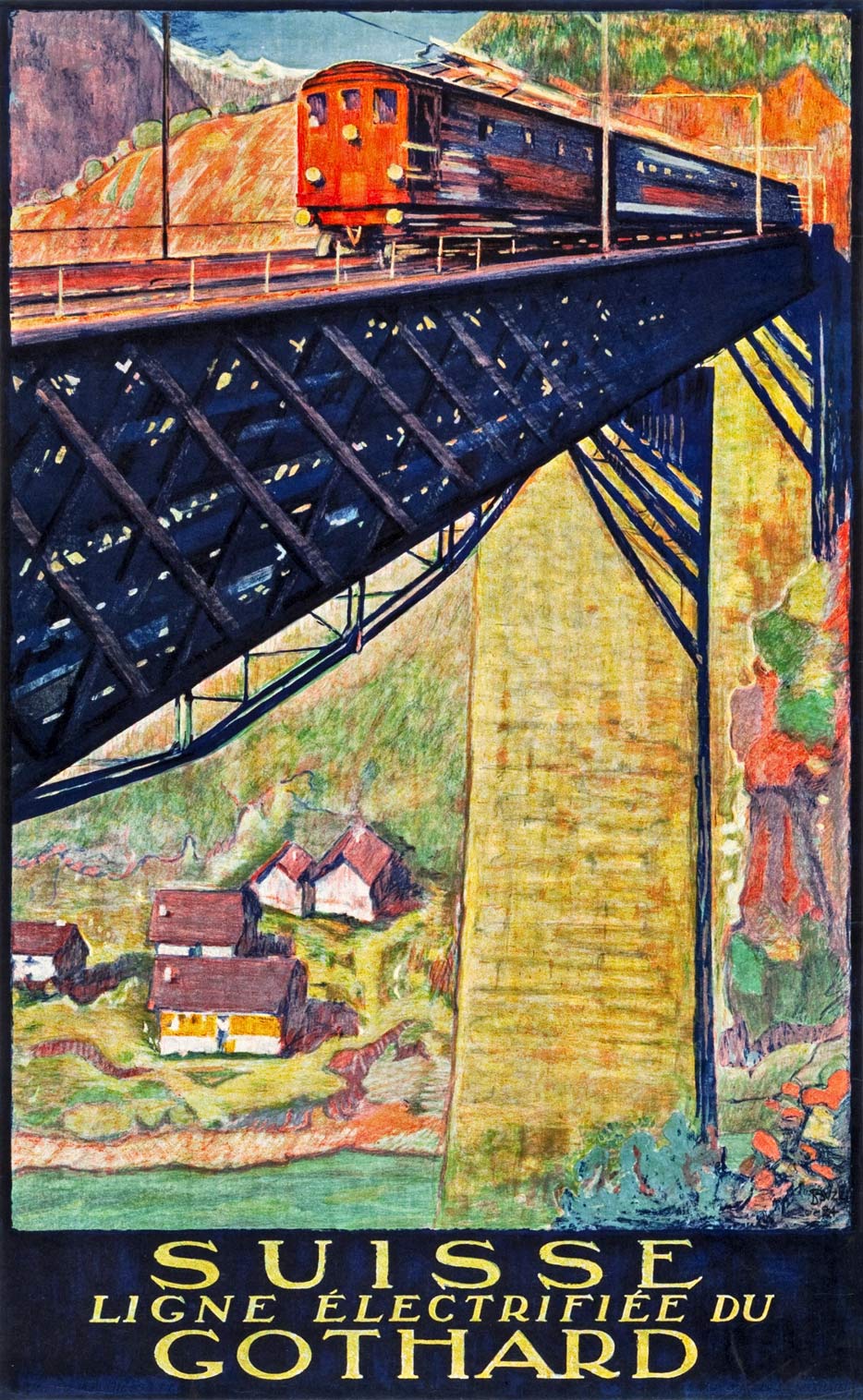
Electrification was started in 1916, but good progress was made only after the war ended. In 1922 the entire line from Lucerne to Chiasso was electrified. A voltage of 15,000 AC was applied. Two hydropower plants at Amsteg and Ritom delivered a continuous power output of 32,000 hp (23,535 kW). Electric traction gave the trains more torque and increased the speed on slopes from 18 to 35 km/h. The pioneering electrification of the Gotthard served as an example for other European railways.
In the 1920s a trip on the electric Gotthard line was a sensation to be promoted internationally. Two posters showed the new electric locomotives: the Gotthard Crocodile Ce 6/8 in Leventina (Ticino), and a Be 4/6 on the Kerstelenbach Bridge (Uri). The posters were created by Daniele Buzzi (1890-1974), an engineer from Locarno who worked on hydropower plants himself and was also a painter and designer.
The frontier station of Basel...
And then we rub our eyes to see, drawn up in one of the platforms, a beautifully-appointed train in the familiar amber-and-cream livery of our own British Pullman cars... This is the St. Gotthard Pullman express, on which we are to travel. Before taking our places in our luxurious car, we do not fail to notice that the haulage of our train is to be carried out by electricity, and not by steam.The replacement of steam has made all the difference to the comfort of a traveller over a line like the St. Gotthard. Before the electrification the slow uphill passage of the steam locomotives, two or three of which were often needed, filled the many tunnels with steam and sulphur, making the journeys dirty and tedious. Today we shall forge steadily upward, maintaining an even speed of almost 40 miles an hour without the slightest apparent effort.
Gotthard-Pullman Express
In 1927 the Gotthard-Pullman Express started running between Basel and Milan. British-built Pullman carriages were operated on the continent by Wagons-Lits in luxury long-distance day trains with service at the spacious seats.
The Gotthard Pullman Express provided connections to night trains from Calais, Paris, Brussels and Berlin at Basel. Another branch started at Zurich. The two train parts, each with a first and second class Pullman car, were combined at Arth-Goldau. In Milan passengers could change to direct trains for Genoa, Venice and Rome. In the summer of 1930 Pullman carriages even ran to and from Paris.
The advertising material indicated which clientele the SBB and Wagons-Lits envisioned: fashionable, affluent, cosmopolitan bon vivants. The poster only showed the lavish interior with fancy passengers and no scenery at all.
Postwar period
In the 1950s and 60s the Gotthard line was perfected with double tracks on the Melide dam and super strong Ae 6/6 locomotives. The rising standard of living made Italian Switzerland accessible to more and more northern Europeans.
Two posters on which — once again — women were central emphasized the difference between the cold Protestant north and the warm Catholic Ticino.
Charles Hindelang painted a Madonna with child against a background of churches and monasteries, in between which the train almost looked sacred too. Hans Schöllhorn (1892-1982) depicted a charming shepherdess near a small red plastered station. Two other posters featured panoramic views from the train. Albert Pfister (1884-1978) painted Monte Ceneri near Bellinzona, Katharina Anderegg (1922-2012) Lake Lucerne near Brunnen.
Gotthard anniversaries
Most anniversaries of the Gotthard Railway were celebrated with festivities. In 1932 the 50-years-old international project had become a nationalist symbol. Poster designer Willi Trapp (1905-1984) pictured the Swiss flag on the dark front of a mighty Ae 4/7 locomotive, and the flags of the Swiss cantons on the side of the train. The German and Italian flags from the 1882 inauguration were missing.
At the 75th anniversary in 1957 the Gotthard Railway was designated the best route to the south through Switzerland. The poster of subtropical Ticino was from Rolf Dürig (1926). During this anniversary two preserved steam locomotives hauled a heavy freight train over the Gotthard one more time.
Gotthard Base Tunnel
Once again, a tunnel under the Gotthard is the longest in the world. The 57-kilometer Gotthard Base Tunnel was opened in June 2016, but the idea already dates from around 1950. Only in 1999 construction of the new tunnel began as part of the AlpTransit project.
The Gotthard Base Tunnel eliminates steep slopes and countless curves. It will double freight transport capacity and shorten the journey by high-speed train from Zurich to Milan by one hour. The tunnel will be in full use by the end of 2016.
Already during the tunnel construction plans were made to preserve the old Gotthardbahn as a tourist attraction. Currently a qualification of the line with its tunnels, bridges and stations as Unesco World Heritage is under consideration.



